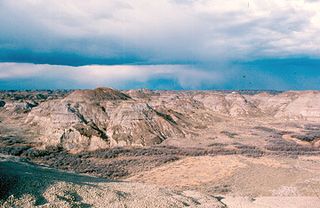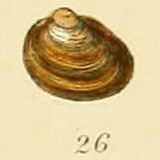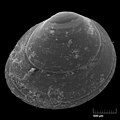
Hadrosaurids, or duck-billed dinosaurs, are members of the ornithischian family Hadrosauridae. This group is known as the duck-billed dinosaurs for the flat duck-bill appearance of the bones in their snouts. The ornithopod family, which includes genera such as Edmontosaurus and Parasaurolophus, was a common group of herbivores during the Late Cretaceous Period. Hadrosaurids are descendants of the Upper Jurassic/Lower Cretaceous iguanodontian dinosaurs and had a similar body layout. Hadrosaurs were among the most dominant herbivores during the Late Cretaceous in Asia and North America, and during the close of the Cretaceous several lineages dispersed into Europe, Africa, and South America.

The Dinosaur Park Formation is the uppermost member of the Belly River Group, a major geologic unit in southern Alberta. It was deposited during the Campanian stage of the Late Cretaceous, between about 76.5 and 74.4 million years ago. It was deposited in alluvial and coastal plain environments, and it is bounded by the nonmarine Oldman Formation below it and the marine Bearpaw Formation above it.

The Unionidae are a family of freshwater mussels, the largest in the order Unionida, the bivalve molluscs sometimes known as river mussels, or simply as unionids.

Sphaerium is a genus of very small freshwater clams, aquatic bivalve molluscs in the family Sphaeriidae, known as the fingernail clams. The small clams in this genus are unusual in that many of them, such as Sphaerium corneum, can climb around underwater on aquatic plants, using their long and strong foot.

Pisidium amnicum is a species of very small freshwater clam, sometimes known as the greater European peaclam or the River pea shell. It is an aquatic bivalve in the family Sphaeriidae.
Pisidium moitessierianum is a species of minute freshwater clam. It is an aquatic bivalve mollusc in the family Sphaeriidae.

Pisidium milium is a species of very small freshwater bivalve in the family Sphaeriidae, the fingernail clams and pea clams.
Pisidium supinum is a species of minute freshwater clam, a pea clam, an aquatic bivalve mollusc in the family Sphaeriidae

Pisidium nitidum, the shining pea clam, is a species of minute freshwater clam, an aquatic bivalve mollusc in the family Sphaeriidae, the pea clams and fingernail clams.

Sphaeriidae is a family of small to minute freshwater bivalve molluscs in the order Sphaeriida. In the US, they are commonly known as pea clams or fingernail clams.

Pisidium lilljeborgii is a species of freshwater bivalve from the family Sphaeriidae.

Pisidium pulchellum, the iridescent pea mussel, is a minute species of pea clam, a freshwater bivalve in the family Sphaeriidae.

Pisidium conventus, the arctic-alpine pea clam, is a species of freshwater bivalve from the family Sphaeriidae.

Dinosaur reproduction was relevant to archosaur physiology, with newborns hatching from eggs. Dinosaurs did not nurture their offspring as mammals typically do, and because dinosaurs did not nurse, it is likely that most dinosaurs were capable of surviving on their own after hatching.
Pisidium stewarti is a species of minute freshwater clam. It is an aquatic bivalve mollusc in the family Sphaeriidae, the fingernail clams and pea clams.
Euglesa is a genus of bivalves belonging to the family Sphaeriidae.
















